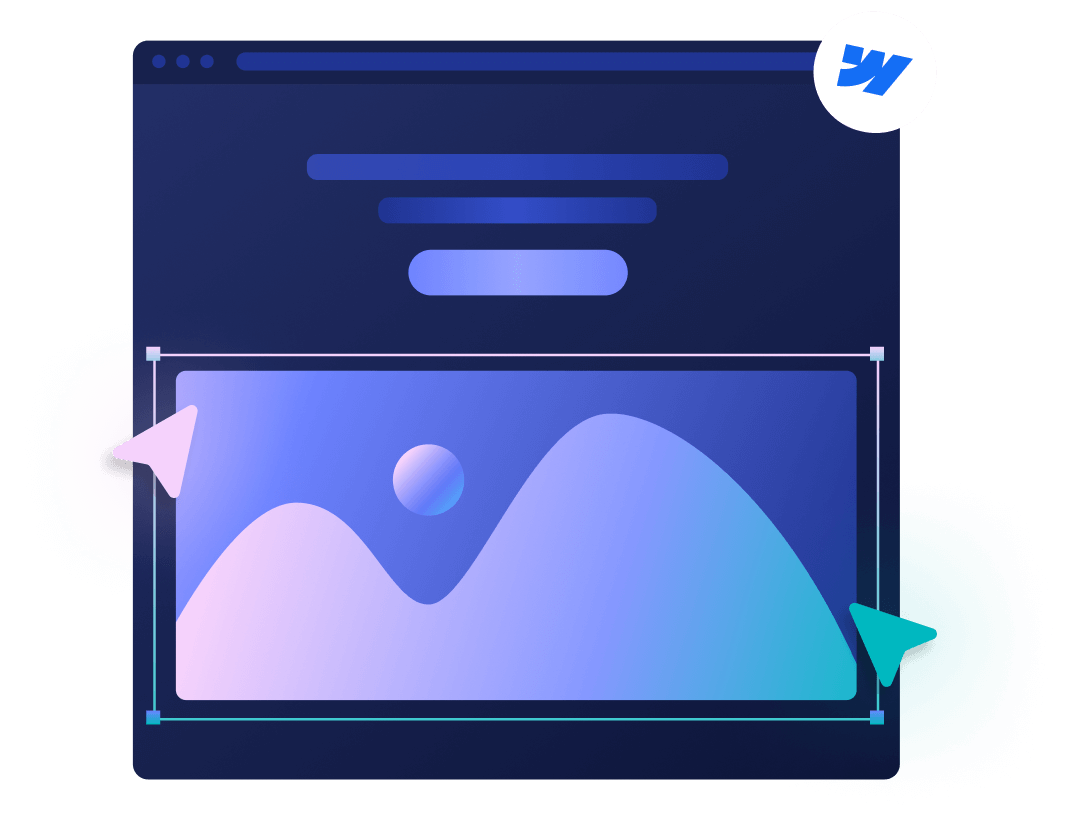
5 Website Design Mistakes That Cost Fintech Startups Leads
Key takeaways
- Unpolished design is a major mistake that stems from issues with image and text, and branding inconsistencies.
- Bad or no trust signals, like poorly presented testimonials, can diminish the number of a fintech startup’s leads.
- One of the bigger mistakes that may cost you leads on the verge of converting is a complicated onboarding process.
- Poor page speed and optimization issues can lead to a significant loss of leads and conversions.
- Problems with navigation and information architecture can lead to mistrust.
You want your website to offer the results you’ve set in your strategy, and to do that, it’s key to avoid the mistakes that tend to cost fintech startups a good number of leads.
This part is clear to every fintech website marketer, but what isn’t always clear are what these mistakes actually are and what you need to do to avoid them.
That’s precisely what we’re here to discuss, so keep reading to find out.
1. Unpolished or Unprofessional Design
Since your clients likely need to entrust their money to you, an unprofessional or unpolished website design can lead them to mistrust you. If the problem is bigger than a few poorly-made photos or out-of-place elements, this becomes a major red flag.
Several things contribute to this, starting with image issues:
- Cliché stock photos: If you overuse generic and low-quality stock images, many visitors will start thinking that your product or service is impersonal and inauthentic. This can lead to higher bounce rates.
- Poorly optimized images: Images need to be compressed to avoid long page load speeds, which can be a conversion killer. It’s one of several things to avoid in your efforts to optimize conversion rates.
Besides visuals, you should also avoid problems with text elements:
- Using different fonts: Having several font families on the site can lead to visual clutter, making the site’s overall design seem amateurish. Plus, it distracts people from the CTA.
- Unreadable font size: If the visitor needs to zoom in on the page or squint their eyes to see the text, then the size is too small, which is a common mistake in site design.
- Bad contrast: Low contrast text can make reading bothersome, and it will lead to various visitors abandoning the site. So, avoid things like light grey text on a white background.
Another thing to avoid revolves around branding inconsistencies. You need to keep key brand elements consistent in style, size, and color. Many potential clients can notice even the slightest differences in the color shade.
Moreover, you need to ensure all UI components are the same across the site, not just on the same page. Things like buttons, navigation elements, and form fields shouldn’t have different designs, sizes, and interaction styles.
2. None or Weak Trust Signals
If you lack proper trust signals and other elements that prove your service is secure and compliant, as well as endorsed by different clients, then there’s no reason to hope for any substantial number of leads.
The biggest mistake here is missing or unclearly displayed visuals that prove compliance and security, including:
- Regulatory or insurance logos like FDIC, FCA, and ASIC
- Encryption and security indicators like MFA and 265-bit encryption, or badges from cybersecurity partners
- Links to privacy policy and terms of service (they shouldn’t be hidden in the footer in tiny anchor texts)
Testimonials are also a big part of having trust signals, and you need to avoid having opaque ones that don’t display the full name, professional title, and logo of the client’s company. You also need to learn how to display testimonials correctly.
Another big mistake here is the lack of third-party validation, like logos and news publications. You should also link to independent review sites like Trustpilot.
When it comes to metrics you’ve achieved for clients, always ensure to display them as that will give potential leads proof that you’re capable of scaling.
Even if you don’t have a full platform, it’s also crucial to avoid generic error codes when things go wrong on your website. Such feedback to the user is too unclear and leads them to trust you less. To prevent this, you should use better-designed and helpful error messages that give more information to the user.
3. Complicated Onboarding Process
When a lead reaches the onboarding stage, it’s clear that they are ready to convert. However, if the process is overly and unnecessarily complex, it can lead many of them to simply give up and look for an alternative.
This is even more pronounced in the fintech space, mainly due to complex legal requirements. Research shows that as many as 74% of leads abandon a service during the onboarding process. It’s thus crucial to avoid mistakes like:
- A lengthy single-page form where users need to scroll for a long time to get through all the required fields.
- Asking for information that isn’t considered essential in the early stages of onboarding. Besides abandonment, this can also create privacy concerns. If you do ask for this information, it’s best to allow the user to skip it since it isn’t essential at the moment.
- No option to save or return to the onboarding process.
- Lacking clear progress indicators like Step 1 of 7, or a progress bar with a percentage showing completion. Lack of this can lead to frustration and possibly abandonment as a result.
It’s also important to avoid having unclear steps or unclear instructions on how to complete a specific step. For instance, you shouldn’t just require a user to upload a photo ID — you should specify the required quality so they know exactly what to do.
And when it comes to the steps revolving around KYC, it’s best to avoid making them look too legalistic. They should be presented as quick and easy to complete tasks, even if you have to make several. This is where hiring the right fintech website agency that understands compliance can be beneficial.
4. Performance and Speed Issues
Site performance or speed issues can be detrimental for a fintech startup as they can lead to both distrust and usage issues. This, in turn, will lead to a significant drop in the number of leads and then conversions.
Page speed issues are always the most common, as even the slightest drops in speed can lead to massive bounce rates. Google’s own research shows that the bounce rate increases by 32% just from a page load time going from 1 to 3 seconds.
These issues mostly stem from:
- Poorly optimized images and other media pieces
- An unnecessary number of animations and other heavy elements
- Overreliance on third-party scripts
- Not using a CDN or browser caching
When it comes to performance problems, the first thing to pay attention to is mobile performance. Some assume that great desktop speed can translate to mobile, so don’t fall into that trap.
If we delve deeper, you also need to pay attention to the time it takes for confirmation screens to appear, like the ones that come after the user opens an account. More than that, try to fix slow response times from APIs if your site has the issue.
5. Bad Navigation and Information Architecture
Navigation problems on your site can be an inconvenience to users, but also a communication issue. If the user can’t easily and quickly find information on your site, they might perceive your business as disorganized at best and one that intentionally hides info at worst.
That’s why you need to avoid mistakes like:
- Cluttered top-level categories that make it hard for users even to start researching and using your site
- Relying on hidden navigation, like hamburger icons on desktop versions, or a poorly designed mobile menu
- Combining navigation for different user segments into one without a clear visual separation
- Inconsistency in navigation menu structure across different pages
- Using overly technical, trendy, or internal terms for navigation links
- Misleading links that lead to pages that are not expected from the anchor text
- Weak search functionality, like a search bar that isn’t easy to find or doesn’t offer autocomplete solutions
Bottom Line
Any of these website design mistakes can cost you a significant number of leads, which is why it’s crucial to take each one seriously. Unfortunately, these are not the only ones, it’s just the five biggest we run into the most in our line of business.
If you need help with any of them, whether it is identifying them, fixing them, or both, Flow Ninja is here to help. Book a 30-minute consulting call to learn what we can do for you.
FAQ
What is the single most important element in fintech website design for converting leads?
It’s hard to give one element as all are important, but trust and clarity certainly fit the bill. Your leads need to immediately understand what you’re offering and how your service can benefit them. Moreover, they need to be certain of their financial data safety with you.
What is the biggest UX mistake you can make as a fintech startup?
Various mistakes can be incredibly detrimental, but one that can lead to the most issues is destroying the trust people have or are yet to develop in your service. This is done by missing out on providing clarity from the get-go with your site’s design and content, but also a sense of security and overall simplicity, especially during onboarding.
Why is a mobile-friendly design crucial for a fintech startup?
If you’re generally marketing toward a millennial and younger audience, and you likely are, then a mobile-friendly design is essential, as these demographics are primarily accessing sites and managing finances over their phones.
How do I determine that my site is losing leads because of design issues?
You need to monitor specific analytics like high bounce rates, weak mobile engagement, and low conversion rates. All of these can be a result of design issues. You can then start testing your site and complete audits to identify the key pain points you should address.
How do I build trust when my site is new and doesn’t have enough testimonials?
You need to focus on improving transparency and professionalism through proper design choices. You should display security measures, create a clear About Us page, integrate links to T&C and Privacy Policy pages, and showcase your notable partnerships.
What makes a fintech website CTA inefficient?
A CTA is generally ineffective if it’s too generic and vague, but also if it asks for too much commitment too soon. A good CTA should have value, like Get My Personalized Rate or Calculate My Savings instead of just Click Here or Sign Up.






.svg)

.png)
.png)






.png)








.svg)

.png)
.png)
.webp)
.svg)

